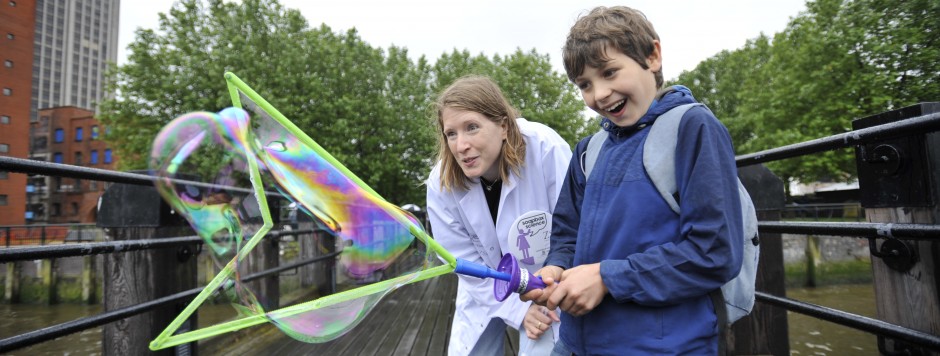 Dr Susan Canney (@CanneySusan) is a research associate at the Department of Zoology, University of Oxford. Her research focusses on understanding the as a means to find ways for humans and nature to co-exist and thrive. Susan will be standing on one of our soapboxes at our Oxford event, where she’ll be discussing “How have Mali’s desert elephants survived and how long have they got?”
Dr Susan Canney (@CanneySusan) is a research associate at the Department of Zoology, University of Oxford. Her research focusses on understanding the as a means to find ways for humans and nature to co-exist and thrive. Susan will be standing on one of our soapboxes at our Oxford event, where she’ll be discussing “How have Mali’s desert elephants survived and how long have they got?”
SS: Susan, how did you get to your current position? What or who inspired you to get a career in science?
SC: There have been two driving forces. On the one hand I have always been very curious about why things are as they are. How did this beautiful world come to be, why is it so different from other planets in the solar system and where do humans fit into the picture? (So not too challenging then.) On the other hand I loved nature, was heart-broken by its destruction and felt I had to do what I could to prevent it. People often talk about formative experiences and maybe mine was aged 3 watching a wood I loved bulldozed to make way for ugly housing. This has led to a somewhat unconventional career moving between science and conservation, because each time I find out something new, I want to do something about it. I have always had support and encouragement from my family, teachers and lecturers despite the occasional eyebrow raising choices.
SS: What is the most fascinating aspect of your research?
SC: There have been many fascinating things. I really enjoy the detective work of piecing together information to illuminate the real causes of a conservation problem – it gives you a window into the workings of the world, and of course solutions can only be effective when they address the underlying causes rather than the symptoms. This has been greatly facilitated by the availability of satellite imagery and digital data which allows you to find out more by looking at patterns over space and time. For example my doctorate involved trying to understand a situation in Tanzania where natural scientists and social scientists had very different analyses of a conservation issue, but these technologies enabled an analysis of local phenomena in the wider context, over space and time, and this allowed those perspectives to be reconciled.

Mali Elephant Project
April-May 2004
Banzena
Photo by: Carlton Ward Jr
www.carltonward.com
with Wild Foundation
www.wild.org
In Mali satellite imagery and GPS collar data allowed an understanding of how these elephants had survived when all others around them and across this latitude had disappeared; identify the threats and actions to ensure their future. However once I knew that action had to be taken within the next 5 years, the question became “what does it take to turn round a bad situation of ecosystem degradation and species loss”; a much more complex and long-term undertaking, but one of continual learning and new insights through engaging with many disciplines.
This was difficult enough before 2012 but when the conflict and jihadist insurgency occurred, the problem has been taken to new heights as we had to deal with elephant poaching despite no government presence or capacity; while at the same time putting additional efforts into promoting community reconciliation to heal the social wounds created by the conflict.
The majority of my time now involves dealing with people, both individually as a part of day-to-day work, and in creating the conditions for humans and wildlife to live together peaceably, for which training in evolutionary biology has been invaluable!
SS: What attracted you to soapbox science in the first place?
 SC: The opportunity to share what I think is amazing and little known, both about the elephants and how individuals can make change even with issues that seem so intractable. The security situation and threat of attack /kidnap has prevented media attention and tourism, and I hope to be able to communicate something of what is happening against all the odds.
SC: The opportunity to share what I think is amazing and little known, both about the elephants and how individuals can make change even with issues that seem so intractable. The security situation and threat of attack /kidnap has prevented media attention and tourism, and I hope to be able to communicate something of what is happening against all the odds.
SS: Sum up in one word your expectations for the day
SC: A mix …… of fear, desire to engage, anticipation and opportunity.
SS: If you could change one thing about the scientific culture right now what would it be?
SC: We need better ways to deal with real-world complexity, better understand and recognise our place in the Earth system, and communicate that understanding to everyone from decision-makers to the general public. That requires society to make it a priority in terms of funding but it also requires targets that reflect that aim.
SS: What would be your top recommendation to a female PhD student considering pursuing a career in academia?
SC: Follow your passion
